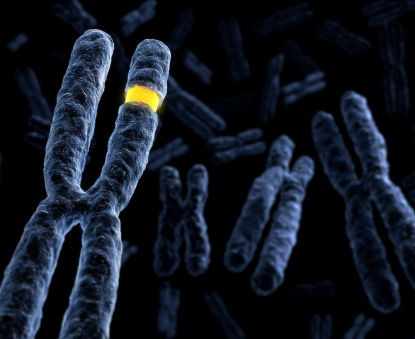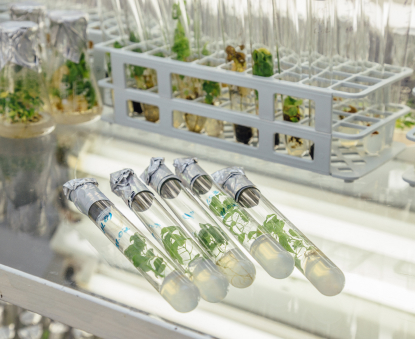Biotechnology
Improving on nature

GENE SILENCING
The ability to genetically transform plants has enabled the development of genetic tools to control plant gene expression – particularly to down-regulate (silence) target genes – in a much more precise way than can be achieved through mutagenesis.
The earliest of these methods involved post-transcriptional gene silencing (PTGS) of a target gene by introducing another copy of that gene, or a fragment thereof, in either the normal orientation (sense) or reverse orientation (anti-sense). Often this resulted in the desired down-regulation of the target gene, in what became known as either cosuppression or antisense suppression. Little was initially known about the molecular basis for the suppression effect, and not being a very reliable or precise technique, it has now been surpassed by alternative PTGS techniques based on RNA-interference (RNAi) that have proven to be more predictable and precise.
RNAi refers to a phenomenon whereby small pieces of double-stranded RNA can shut down translation of a protein by binding to and degrading complementary regions of the messenger RNA transcript (mRNA) that codes for that protein. RNAi is a natural process in plants with a role in regulating the expression of protein-coding genes. It is also involved in mediating resistance to pathogenic organisms, such as viruses, by degrading their RNA when it invades the plant cell.
Researchers were able to harness this RNAi phenomenon to inactivate endogenous genes by the controlled degrading of the mRNA transcripts of the targeted plant genes. The technique involves introducing a hairpin-shaped RNA molecule (hpRNA) designed to be complementary to a specific stretch of the target gene (and no other gene). The hairpin structure creates a double-stranded RNA region which invokes the RNAi process and leads to the degradation of the mRNA of the target gene.
An important advantage of these PTGS techniques over mutagenesis is that they can be deployed in a tissue-specific manner by placing the introduced hpRNAi construct under the control of a tissue specific promoter, leaving the expression of the same gene unaffected in other tissues.
RNAi gene silencing in plants was invented and developed by CSIRO in Australia in the 1990s and was shown to be highly effective in directing seed-specific inactivation of oil biosynthesis genes, initially targeting desaturase genes in Arabidopsis, and subsequently multiple desaturase and thioesterase genes in cottonseed. It has since been employed in engineering safflower to produce a super-high oleic oil (SHO), which entered commercial production in Australia in 2020. SHO Safflower is the first GM crop to be developed using RNAi technology.
<-- More Biotechnology -->

PLANT BREEDING
Conventional plant breeding involves controlled pollination followed by generations of selection within progeny for desired combinations of traits.

MUTAGENESIS
Where natural variation is insufficient to achieve the desired trait, mutagenic treatments may be used to create additional genetic variation.

TRANSFORMATION
New DNA can be introduced to create GM plants with desired genetic traits, using either biolistics (gene-gun) or Agrobacterium transformation.

GENE SILENCING
A targeted gene can be ‘silenced’ by introducing a construct that triggers degradation of the gene’s message, preventing its translation into protein.

GENE EDITING
Genes can be enhanced or inactivated by using ‘molecular scissors’ to replace or remove short sequences of DNA at highly specific locations.

GENE ADDITION
Plants can be engineered to make new products by incorporating novel gene sets that encode specific enzymes or entire metabolic pathways.

